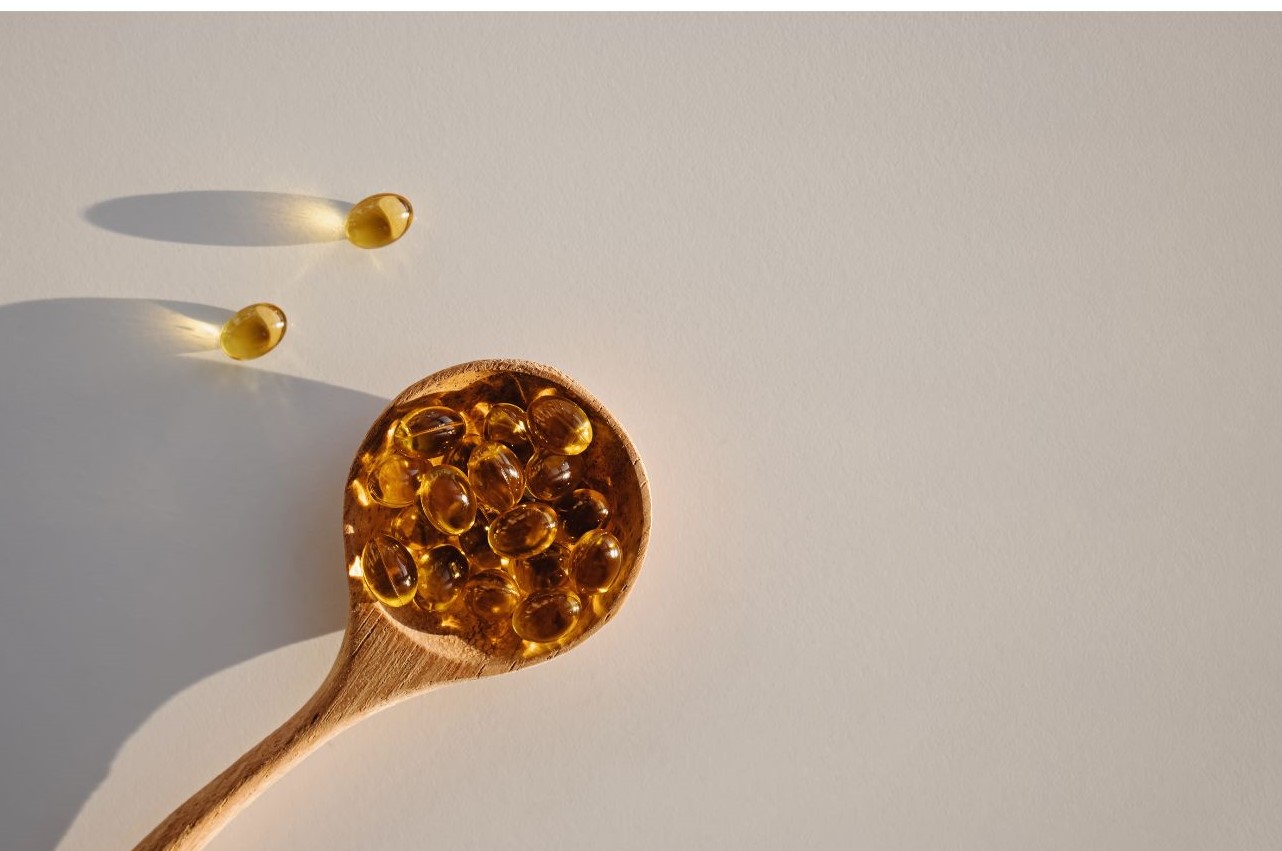If you’re a skin care enthusiast or someone who loves spending time outdoors, you’ve probably heard a lot about vitamin D. This essential nutrient plays a crucial role in maintaining healthy skin, bones, hormones, immune health, and more. But how much do you really need, and can you get enough from the sun alone?
In this post, we’ll unravel the mysteries surrounding vitamin D, explore the controversy around retinol, and provide practical tips for balancing sun exposure with skin health.
For more on how to make holistic living a part of your daily routine, learn more about my collective, The Circle.
The Science Behind Vitamin D
Vitamin D, often dubbed the “sunshine vitamin,” is unique because your body can produce it when exposed to sunlight. Specifically, UVB rays from the sun trigger vitamin D synthesis in your skin. This process is vital to direct calcium absorption to the bones, and prevents it from being deposited in your arteries.
Vitamin D is also necessary for healthy immune function, protects against autoimmunity, and infections (1). It’s crucial for hormone production, including estrogen and progesterone, and also plays a significant role in your mood. Low vitamin D levels are linked with depression & anxiety (2).
Nearly every single cell in the body has receptors for vitamin D, which means it’s used all over the body and is absolutely crucial for your continued health (3).
Factors Affecting Vitamin D Production
Several factors influence how much vitamin D your skin can produce, including:

- Skin Tone: People with darker skin have more melanin, which can reduce the skin’s ability to produce vitamin D.
- Geographical Location: Living closer to the equator means more direct sunlight year-round. At least two thirds of the US is at a latitude where vitamin D production from the sun during winter is nearly impossible (4)
- Season and Time of Day: UVB rays are more intense during midday and summer months. Most people spend a shocking 93% of their day indoors, making it almost impossible to get enough vitamin D from sun exposure (5).
Understanding these factors can help you gauge how much sun exposure you need for adequate vitamin D levels.
Watch: Do You Really Need More Vitamin D?
Debunking the Myths
Common Misconceptions About Sun Exposure
There’s a lot of conflicting information about how much sun exposure is safe and necessary for producing vitamin D. Let’s clear up some common myths:
- Myth 1: You need to tan or burn to get enough vitamin D.
- Fact: Moderate sun exposure without burning is sufficient.
- Myth 2: You can get enough vitamin D from food alone.
- Fact: Sun exposure accounts for ~90% of vitamin D in the body in people who do not take supplements (6), which means you’ll need a supplement if you’re not in the sun much.
- Myth 3: You can’t get enough vitamin D in winter.
- Fact: While harder, it’s still possible with brief midday exposure, supplements, & dietary sources.
Read: 7 Changes for Your Summer Routine + My SPF Rules
The Controversy with Retinol
Vitamin A is necessary for vitamin D signaling but excessive intakes, which are more common in developed countries, can restrict vitamin D’s effects (7). Some studies have also found that supplemental vitamin A can overshadow health benefits of vitamin D supplementation (8).
This has led to some controversy surrounding the use of retinol, a derivative of vitamin A, in skincare products. While retinol is known for its anti-aging properties and ability to improve skin texture and tone, it’s important to use it in moderation and balance with adequate sun exposure.
Some recommend discontinuing the use of retinol products altogether in the summer months.
The Debate: The Active form of Vitamin A and Vitamin D
Most skincare products containing retinol use the active form, known as retinoic acid. This form can potentially interfere with vitamin D receptors in the skin, making it difficult for your body to produce enough vitamin D from sunlight. However, there is limited research on this topic and more studies are needed to fully understand the relationship between retinol and vitamin D.
Related: What Causes Collagen Breakdown Besides Age?
Who’s at Risk for Vitamin D Deficiency?
Know the risk factors for vitamin D deficiency, so you can take action to improve your levels if needed. Some groups at higher risk include:
- People with darker skin: As mentioned earlier, more melanin means less vitamin D production.
- Elderly individuals: Aging affects the skin’s ability to produce vitamin D.
- Pregnant and breastfeeding women: Vitamin D needs increase substantially for moms-to-be and if you’re nursing.
- People who are overweight or obese: Vitamin D is stored in fat cells, so having more fat can reduce the availability of vitamin D to be used by the body (9).
- Individuals with digestive disorders: Conditions like Crohn’s disease or celiac disease can affect the absorption of vitamin D from food.
If you fall into any of these categories, I encourage you to work with a provider to test for optimal vitamin D levels.
Testing Your Vitamin D Levels

If you’re experiencing any health symptoms, or if you just want to be proactive in finding your baseline, I recommend testing your vitamin D levels with a provider. Integrative medicine doctors are generally easier to do this with, as conventional guidelines for deficiency are much lower, and you may be met with pushback from a conventional doctor.
There are different types of vitamin D to test for, but the most accurate measure is 25-hydroxyvitamin D or 25(OH)D. Optimal levels may vary slightly depending on who you ask, but generally range from 60-80 ng/mL (10).
Many practitioners become confused when ordering a vitamin D test. Because 1,25-dihydroxyvitamin D is the active form of vitamin D, many practitioners choose the “active” form instead of 25(OH)D, which is actually incorrect (11). When testing, it’s more accurate to test 25(OH)D, not 1,25(OH)2.
Finding Balance
So how do you strike the right balance between getting enough vitamin D from the sun while also protecting your skin? Here are some tips:
- Know Your Skin Type: Knowing your Fitzpatrick skin type can help determine how much sun exposure you need and when to wear sunscreen.
- Use Sunscreen Wisely: While sunscreen is essential for protecting against UV damage, wearing it all the time can inhibit vitamin D production. Consider using SPF 15 or lower for brief periods of midday sun exposure.
- Consider Dietary Sources: If you live in an area with limited sunlight, consider incorporating vitamin D-rich foods into your diet, such as fatty fish, egg yolks, and fortified dairy products.
How Much Sun is Safe?
Guidelines for Healthy Sun Exposure
Balancing sun exposure for vitamin D with protecting your skin from damage can be tricky. Here are some general guidelines:
- Timing is Everything: Aim for 10-20 minutes of sun several times a week, depending on your skin tone and location. And incorporate more of these Foods to Protect Against UV Damage
- Sunscreen Smartly: If you’ll be outdoors for an extended time, use a non-toxic, mineral-based sunscreen with at least SPF 30. Apply it generously and reapply every two hours, or more often if swimming or sweating.
- Protective Clothing: Wear hats, sunglasses, and long sleeves to shield your skin from excessive sun exposure.
- Monitor Your Skin: Pay attention to any changes or signs of sun damage, and adjust your exposure accordingly.
Read: The Sunscreen Survival Guide
Alternatives to Sun Exposure
Dietary Sources of Vitamin D
If sun exposure isn’t feasible or sufficient, you can also get vitamin D from your diet. Some excellent sources include:
- Fatty Fish: Salmon, mackerel, and sardines are rich in vitamin D.
- Fortified Foods: Many dairy products, orange juice, and cereals are fortified with vitamin D.
- Egg Yolks and Mushrooms also contain this essential nutrient.
The Role of Supplements
For those who struggle to get enough vitamin D from sunlight or diet, supplements can be a viable option. Vitamin D supplements come in two forms:
- Vitamin D2 (ergocalciferol): Derived from plants, but it is less well absorbed.
- Vitamin D3 (cholecalciferol): The same form produced by your skin when exposed to sunlight and more effective at raising blood levels of vitamin D.
Key Takeaways
Vitamin D is essential for maintaining healthy skin and overall well-being, but getting the right amount through sun exposure can be challenging. Be mindful of your sun exposure, consider dietary sources, and work with a healthcare provider to ensure adequate levels. And remember, moderation is key! Soak up some safe sun for overall health, but don’t forget to protect your precious skin as well.


